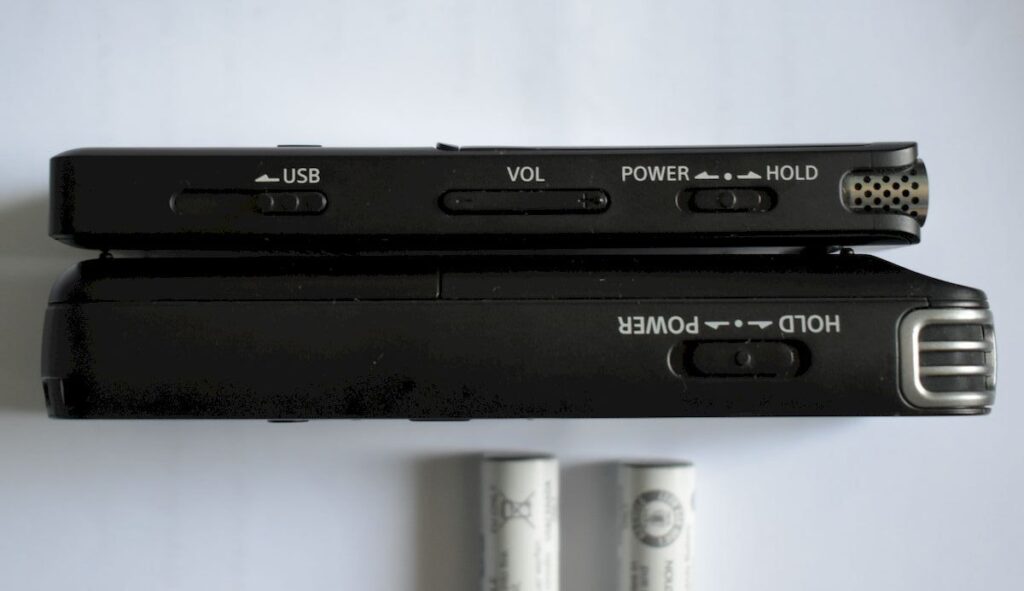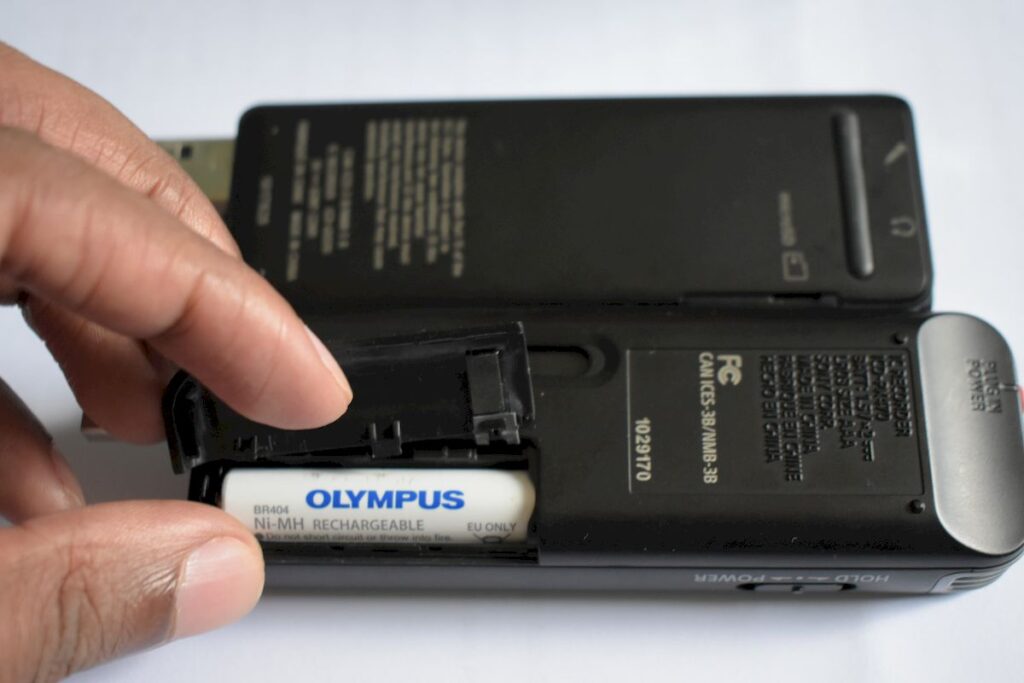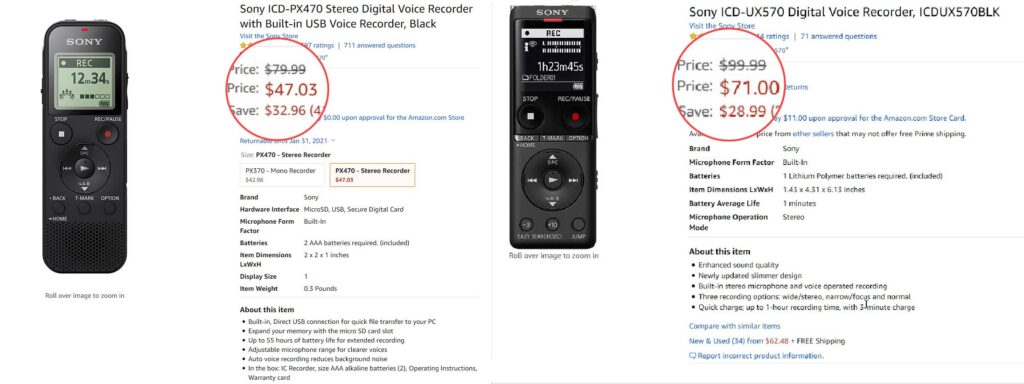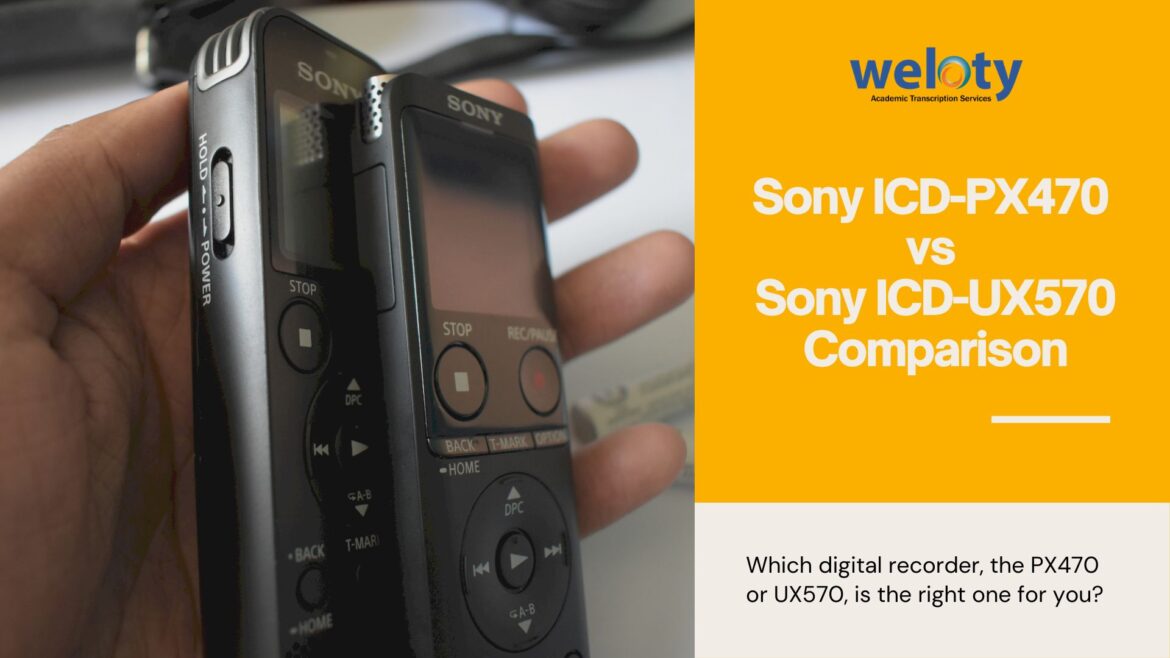Which voice recorder, between the Sony ICD-PX470 and the Sony ICD-UX570 is right one for you?
Let’s talk about it.
Today, we’re going to compare the Sony PX470 and the Sony UX570 voice recorders and look at the 3 main reasons you should choose one over the other.
The Sony ICD-PX470 and the Sony ICD-UX570 are very similar. Both have 3.5mm mic inputs, headphone jacks, support high capacity microSD cards, record in mp3 and WAV format, come with 2 microphones and have similar microphone sensitivity controls. Both also have slide out USB connectors and speakers, though the px470 has a slightly large speaker.
| Sony ICD-PX470 | Sony ICD-UX570 | |
| Product Dimensions w/h/d | 1.51 x 4.5 x 0.0.76 inches | 1.45 × 4.05 × 0.49 inches |
| Recording Formats | LPCM (WAV), MP3 | LPCM (WAV), MP3 |
| Storage | 4GB, microSDHC expansion | 4GB, microSDHC, microSDXC expansion |
| Microphones | Stereo microphones | Stereo microphones |
| Ports | 3.5mm microphone input, 3.5mm headphone output, USB 2.0 for PC & Mac | 3.5mm microphone input, 3.5mm headphone output, USB 2.0 for PC & Mac |
| Battery | 2 AAA Batteries | 3.7v Lithium ion |
| Speaker Diameter | 20mm (0.71 inches) | 16 mm (0.63 inches) |
| Check Price on Amazon | Check Price on Amazon |
PX470 vs UX570: 3 Differentiating Features
But what are the 3 differentiating features you should consider when choosing either recorder.
Physical Size

The first is the physical size of the recorders. The PX470 is almost double the size of the UX570. And that’s mainly because of how thick it is. If you want a smallish voice recorder, which will easily fit into your pocket, consider the UX570.
Battery

The second differentiating feature between the Sony ICD-UX570 and the Sony ICD-PX470 is how they are powered. Now, the UX570 is powered by an internal lithium battery while the PX470 is powered by two changeable AAA batteries. While it is possible to change the built in battery on the UX570, it’s not an easy task. While swapping batteries on the PX470 is very easy.
Your battery choice boils down to personal preference. I used to prefer electronics with changeable batteries, but the more I use devices with internal batteries, the more I find them indispensable. Internal batteries reduce e-waste, and make devices easier to use. For instance, I can charge the internal battery on the UX570 using a powerbank.
Which reminds me, you can run both recorders, the UX570 and the PX470 with a powerbank, so there’s that. If you have a strong preference to devices with changeable or internal batteries, let me know in the comment section below.
Price

Finally, the third consideration when choosing the UX570 or the PX470 is cost. The PX470 usually retails for $50 and the UX570 for $70. But keep in mind that you’ll need to buy AAA batteries for the PX470. If you choose to buy rechargeable batteries and a charger, that’ll add another $20 to $30 to the cost of the PX470. Realistically, the PX470 will cost you more than the UX570 in its lifetime of use.
So what do I recommend? Having extensively used the UX570 and the PX470, I always recommend getting the UX570 as an interview(s) voice recorder. I’ve yet to find an instance when I’d recommend the PX470 over the UX570. The UX570 is smaller, easier to use, and in the long run, cheaper. It’s the better voice recorder for research interviews.
If you’d like to buy the UX570, here’s the Amazon link, and here’s the Amazon link to the PX470.
That’s it for this post. If you’ve found it useful, let me know in the comment section below. Keep us in mind for all of your academic transcription needs and have a wonderful day.



Leave a Reply